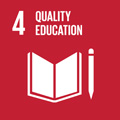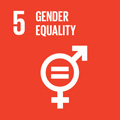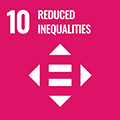- Docente: Caterina Saracco
- Credits: 6
- SSD: L-LIN/01
- Language: Italian
- Teaching Mode: In-person learning (entirely or partially)
- Campus: Bologna
-
Corso:
Second cycle degree programme (LM) in
Italian Culture and Language for Foreigners (cod. 0983)
Also valid for Second cycle degree programme (LM) in Language, Society and Communication (cod. 6724)
Second cycle degree programme (LM) in Italian Culture and Language for Foreigners (cod. 6726)
Second cycle degree programme (LM) in Language, Society and Communication (cod. 8874)
-
from Feb 11, 2026 to May 14, 2026
Learning outcomes
.This course aims to present the methods and different ways through which communication and language can be considered and analyzed as social and cultural dimensions. During the course will be examined the various types of linguistic varieties, the linguistic construction of reality and the social representations reflected in it, the relationship between communication, language and individual and collective identities. The course will also draw upon important issues as the sociology of language, the correlation between language and social acting, language and the construction of social realities. Research labs and workshops of sociolinguistic nature will take place through the development of the course. These labs will take in examination concrete types of languages and their various spoken and written repertories. The final purpose of this course beside from laying the theoretic bases of the field, resides in initiating the students to methodology research and practice research. According to a larger picture, the course aims at establishing a correlation between Sociolinguistic principles and Didactic ones.
Course contents
The course focuses on minority languages and their protection in Italy. Minority languages from some other European countries will also be covered.
Readings/Bibliography
- FIORENTINI I., 2022, Sociolinguistica delle minoranze in Italia. Un'introduzione, Roma, Carocci.
-SLIDES of the course
-HANDOUT
Teaching methods
Lectures with seminars
Assessment methods
Students can choose between two assessment methods:
Method A:
A short essay of up to 6 pages (including bibliography) on a topic of the course and agreed upon with the instructor, to be submitted at least 10 days before the exam date.
An oral exam on the day of the exam, during which students will demonstrate their understanding of the topics (2 questions).
Mode B:
An oral exam on the day of the exam, which will assess the understanding of the course topics (5 questions).
Mode A is recommended for those attending the course; Mode B is recommended for those not attending, but the choice is free.
Teaching tools
Slides and handouts will be uploaded to the e-learning platform available to students.
Office hours
See the website of Caterina Saracco
SDGs



This teaching activity contributes to the achievement of the Sustainable Development Goals of the UN 2030 Agenda.
